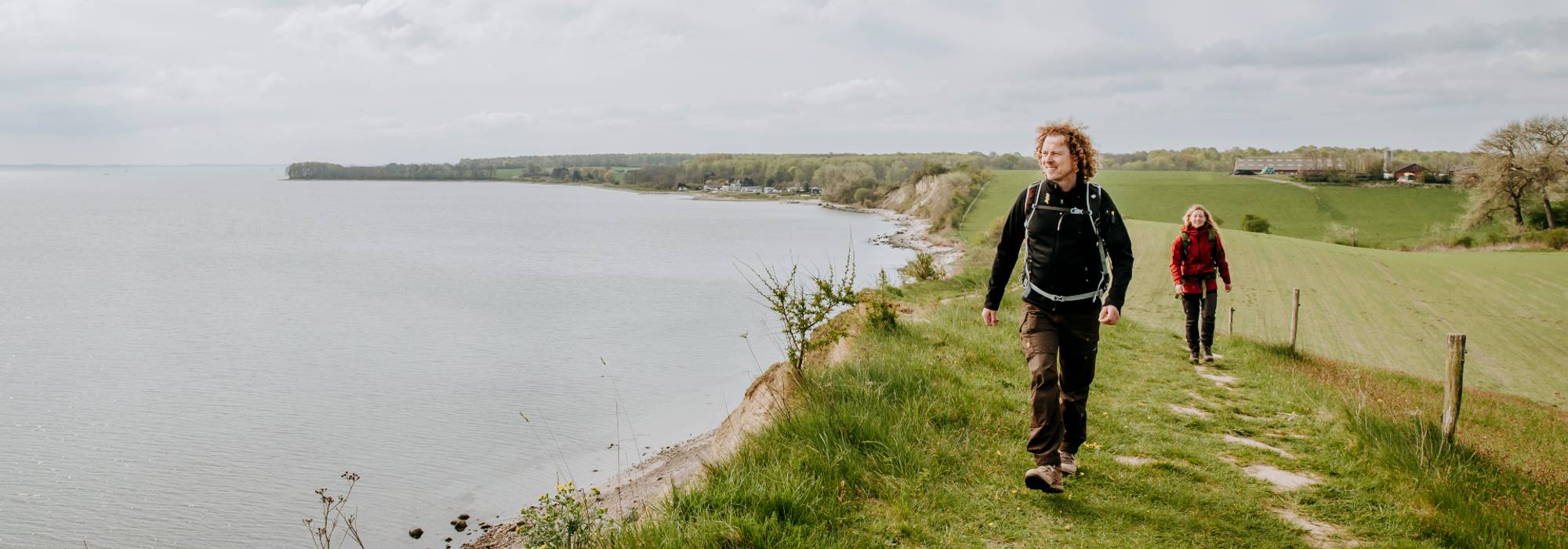Hiking holiday in Sønderjylland
A hiking holiday in Sønderjylland can involve a huge range of different experiences, depending on whether you choose to walk in the hilly and fertile area running alongside Flensburg Fjord on the Gendarmstien hiking trail or whether you choose a route through the unspoilt and flat marshland around Tønder on Marskstien – The Marsh Trail.
If you wish to hike on one of the routes, but also wish to make things as easy and convenient as possible, then it’s a good idea to read the following. We’ve put together different packages in which breakfast, a packed lunch and sometimes an evening meal are included. Transfer of your baggage is also taken care of, and where necessary there’s also personal transport from the place that you’re staying overnight.
Have you booked your overnight stays yourself, but would still like baggage transfer? Take a look at our Transport page, where you can find baggage transfer on both Gendarmstien and Marskstien.
Gendarmstien
Gendarmstien runs from the Danish-German border at Padborg through Kollund, Gråsten, Broagerland and Vemmingbund, past Dybbøl and on to Sønderborg and Høruphav on the island of Als before ending in Skovby. Most of the route follows the coast and runs through a varied landscape of woodland, bogs, meadows and beaches.
